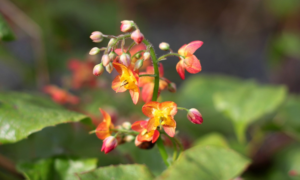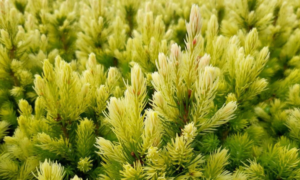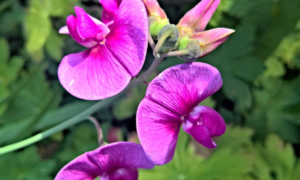We independently research, review, and recommend the best products. If you buy something through our links, we may earn a commission. Learn more.
As the seasons come and go, our old vegetation makes way for new growth. But just because a plant or shrub has passed its prime, doesn’t mean it’s completely forgotten—through the magic of decomposition, they can still offer a wealth of benefits beyond the green grave.
This idea is known as chop and drop gardening, an eco-friendly technique that harnesses the power of decomposition to enrich soil, providing essential nutrients for future plants. It’s a relatively new method, but one that’s gathering pace.
Fancy finding out more? Join me as we explore the world of chop and drop gardening.
Contents
What is Chop and Drop Gardening?

The name says it all—you chop down old plant material and drop it on the ground. This mimics what would naturally occur in an undisturbed ecosystem, allowing decomposition to enrich the soil.
At its core, chop and drop gardening is all about letting nature take its course. When old plant material falls to the ground, it provides food for the soil organisms that help to break it down, like fungi and bacteria. This process results in a rich compost-like layer that provides essential nutrients for future plants. And because the roots of the old plants remain in the soil, they help to prevent erosion and maintain aeration.
The Different Chop and Drop Methods
There are several chop and drop methods, each with their own benefits.
For example, you can chop and drop in place, where the remains fall by the plant’s side. Choose this option and your annual plants (including some non-woody perennials) will die back to the ground at the end of the growing season. The only negative with this method is contending with a messy garden — but it won’t last for long.
Whatever you do, don’t yank dead plants out and throw them in your green bin. Instead, chop and drop onto a compost pile for controlled decomposition. You’ll need to turn the pile regularly and balance brown/green material, but with a little bit of work you can produce some fantastic homemade fertiliser. We’ve discussed hot composting in detail here.
The benefits of chop and drop gardening

When we chop and drop, we create a natural form of compost that enriches the soil with much-needed nutrients. This improves soil structure, leading to stronger and healthier plants.
In addition to enhancing soil health, chop and drop gardening also conserves water. By adding organic matter, we create a spongy layer that absorbs and retains moisture, reducing the need for watering.
Another benefit of chop and drop gardening is attracting beneficial insects to the garden. These insects, such as bees and ladybugs, help control pests and pollinate plants, leading to a healthier, more balanced ecosystem.
Finally, chop and drop gardening can reduce the need for fertilisers and pesticides. By providing the soil with a natural source of nutrients, we can reduce the amount of chemicals we need to use in the garden, promoting a more sustainable and eco-friendly environment.
Best plants for chop and drop
Choosing plants that are naturally fast-growing and have a high biomass production is key to success. Some of my favourite plants for chop and drop gardening include comfrey, borage, and clover. These plants not only provide ample organic matter for the soil, but they also help to improve structure and fertility.
I also recommend including plants that have large leaves or stems, such as rhubarb or artichokes, and those with lots of foliage, such as kale or collards. These plants provide ample material for chop and drop gardening, which, in turn, will help to improve the health of your soil.
Common problems with chop and drop gardening
One of the most common problems I’ve encountered is that the dropped plant material often becomes matted and compact, which can restrict water and air flow to the soil. To avoid this, simply chop the material into smaller pieces and spread it thinly on the ground. Another solution is to add a layer of mulch on top to help break down the material and prevent it from matting.
Another issue is that some of the decomposing material can release allelopathic chemicals, which can inhibit the growth of other plants. To mitigate this, you can chop and drop plants in different parts of the garden, or only chop and drop plants that you know won’t release these chemicals.
One last thing to remember is that chop and drop gardening can encourage the growth of weeds. To avoid this, simply remove any weed seed heads from the dropped material before you chop and drop it.
And that’s it. Hopefully you have a better understanding of the chop and drop method. Now you can try it for yourself!







